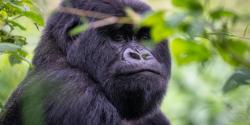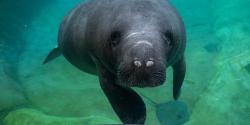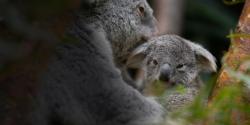Featured Species
Eurasian Eagle owl (Bubo bubo)
Known for their loud calls, they are heard more often than they are seen, even though they are the largest owl in the world.
Conservation Status: Least Concern, populations are decreasing
Habitat & Range: Inhabits mainly rocky country with cliffs and ravines, caves, patches of woodland, scattered trees or groves, and generally in undisturbed wilderness areas from Europe to the east coast of Asia
Threats:
- Human encroachment creating disturbances can cause the abandonment of nests
- Vehicle strikes, barbed wire, overhead power lines
- Egg-collectors
- Human wildlife conflict and poisoning
Praying mantis (Mantidae)
There are over 2,000 species of mantids, large, slow-moving insects with long front legs. Their coloration often offers them excellent camouflage.
Conservation Status: Unknown
Habitat & Range: Most are tropical or subtropical
Threats:
- habitat loss and degradation
- use of pesticides
- spread of invasive species
Eastern Elk or Wapiti (Cervus canadensis canadensis)
These social animals can live in herds of up to 400 elk, lead by one female.
Conservation Status: Least Concern, populations are increasing
Habitat & Range: Found only in the western United States from Canada through the Eastern Rockies to New Mexico, and in a small region of the northern lower peninsula of Michigan, preferring open woodlands and avoid dense unbroken forests. Elk were re-established in the eastern United States with three transplantations throughout the 1900s.
Threats:
- Habitat loss and fragmentation due to residential and commercial development
- Heavily poached in some regions for food
Orangutan (Pongo spp.)
Orangutans move easily from tree to tree when in search of food. They are opportunistic foragers, which means they eat what they can find, but seem to prefer a variety of fruits. When trees are cut down in their habitat it can keep them from finding food.
Conservation Status: Critically Endangered, populations are decreasing
Habitat & Range: All subspecies inhabit moist lowland forests and peat swamps. Sumatran orangutans (Pongo abelii) are found on the island of Sumatra, Indonesia. The Tapanuli orangutan (Pongo tapanuliensis) population is found in an isolated area in the Batang Toru region of Indonesia. The Bornean orangutan (Pongo pygmaeus) is found in fragmented areas on the island of Borneo.
Threats:
- Habitat loss and fragmentation, mainly due to palm-oil production/logging
- Human-wildlife conflict over crops
- Poaching and illegal wildlife trade
- Climate change
King cobra (Ophiophagus hannah)
Though the king cobra is a large and dangerous snake, it prefers to escape, rather than attack.
Conservation Status: Vulnerable, populations are decreasing
Habitat & Range: Widely distributed in South and Southeast Asia in a variety of habitats, but primarily forests and agricultural areas
Threats:
- Habitat loss due to logging and agricultural expansion
- Harvested for skin, food, traditional medicine, and the pet trade
- Persecution by humans who are afraid of them
Okapi (Okapia johnstoni)
Most closely related to the giraffe, these elusive animals can be hard to research.
Conservation Status: Endangered, populations are decreasing
Habitat & Range: Found in dense, high canopy forests in parts of central, northern and eastern the Democratic Republic of Congo
Threats:
- Habitat loss due to logging and human settlement including illegal occupation of protected areas
- Hunting for meat and skins
- Presence of illegal armed groups in and around key protected areas preventing effective conservation action









